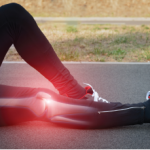The input parameters for the OAPol model were derived from the Osteoarthritis Initiative and Centers for Disease Control and Prevention (CDC) data and included the proportion of the U.S. population with knee OA aged 45 years and older who are inactive, insufficiently active and active.
Among the 13.7 million persons identified as living with knee OA in the U.S., the study found 48% were inactive, 41% insufficiently active and 11% active. When estimating the quality-adjusted life-years lost, the study found 4.4 million quality-adjusted life-years were lost to physical inactivity relative to activity, 1.3 million quality-adjusted life-years were lost due to physical inactivity relative to insufficient activity and 3.2 million quality-adjusted life-years were lost due to insufficient activity relative to activity.
When looking only at losses compared with activity, an average of 0.55 quality-adjusted life-years per person were lost due to inactivity or insufficient activity over the remaining duration of the patients’ lifetimes—or a total of 7.5 million quality-adjusted life-years. The highest quality-adjusted life-year losses were seen in Black Hispanic women (0.76 quality-adjusted life-year per person), with about a 20% higher loss burden in all women, regardless of race and ethnicity than in men.
According to Dr. Losina, obesity plays an important role in the highest burden of disease found in this demographic group. “This population group bears the highest losses due to the lowest [participation] in physical activity and the higher prevalence of obesity,” she says.
“These data point to the importance of tailoring physical activity interventions, which, even with modest efficacy, could lead to substantial aversion of quality-adjusted, life-year losses for each demographic group,” she says.
Increased Physical Activity & Disease Burden
In addition to looking at quality-adjusted, life-years lost due to inactivity or insufficient activity, the investigators examined the effect of increased physical activity on quality-adjusted life-years and other health outcomes. They found 871,541 potential quality-adjusted life-years would be saved if 20% of inactive OA patients were active. Even a 5% increase in activity among inactive patients would save 217,885 quality-adjusted life-years.
Additionally, cancer (95,920 cases), cardiovascular disease (222,413 cases) and diabetes (214,725 cases) could potentially be prevented if 20% of inactive patients were active.
These numbers underscore just how important physical activity is for knee OA patients. “Knee OA treatment guidelines point to the established evidence suggesting that physical activity and exercise improve pain among knee OA patients,” says Dr. Losina. “Reminding patients about the importance of engaging in physical activity by briskly walking 20–30 minutes per day and offering some actionable recommendations on how to achieve those goals may help patients with knee OA reach their physical activity goals, improve their health, prevent further chronic diseases and improve and extend their life.”

